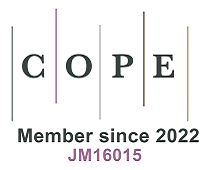REFERENCES
1. Huang Y, Liu S, Pei M, Li J, Xu H, Chen Y. Unveiling H2O2-optimized NOx adsorption-selective catalytic reduction (AdSCR) performance of WO3/CeZrO2 catalyst. Rare Met 2023;42:3755-65.
2. Ju L, Tang X, Kou L. Polarization boosted catalysis: progress and outlook. Microstructures 2022;2:2022008.
3. Li X, Shen P, Li X, Ma D, Chu K. Sub-nm RuOx clusters on Pd metallene for synergistically enhanced nitrate electroreduction to ammonia. ACS Nano 2023;17:1081-90.
4. Wu Y, Yao K, Zhao Z, et al. Efficient electrocatalytic reduction of nitrate to ammonia over Mo2CTx micro-foam with rich edge sites. Chem Eng J 2024;479:147602.
5. Soloveichik G. Electrochemical synthesis of ammonia as a potential alternative to the Haber-Bosch process. Nat Catal 2019;2:377-80.
6. Luo H, Li S, Wu Z, et al. Modulating the active hydrogen adsorption on Fe-N interface for boosted electrocatalytic nitrate reduction with ultra-long stability. Adv Mater 2023;35:e2304695.
7. Wu Z, Song Y, Guo H, et al. Tandem catalysis in electrocatalytic nitrate reduction: unlocking efficiency and mechanism. Interdiscip Mater 2024;3:245-69.
8. Sun L, Liu B. Mesoporous PdN alloy nanocubes for efficient electrochemical nitrate reduction to ammonia. Adv Mater 2023;35:e2207305.
9. Yang G, Zhou P, Liang J, Li H, Wang F. Opportunities and challenges in aqueous nitrate and nitrite reduction beyond electrocatalysis. Inorg Chem Front 2023;10:4610-31.
10. Liang X, Zhu H, Yang X, et al. Recent advances in designing efficient electrocatalysts for electrochemical nitrate reduction to ammonia. Small Struct 2023;4:2200202.
11. Zhou J, Wen M, Huang R, et al. Regulating active hydrogen adsorbed on grain boundary defects of nano-nickel for boosting ammonia electrosynthesis from nitrate. Energy Environ Sci 2023;16:2611-20.
12. Peng O, Hu Q, Zhou X, et al. Swinging hydrogen evolution to nitrate reduction activity in molybdenum carbide by ruthenium doping. ACS Catal 2022;12:15045-55.
13. Yang R, Li H, Long J, Jing H, Fu X, Xiao J. Potential dependence of ammonia selectivity of electrochemical nitrate reduction on copper oxide. ACS Sustain Chem Eng 2022;10:14343-50.
14. Masuda T, Fukumitsu H, Fugane K, et al. Role of cerium oxide in the enhancement of activity for the oxygen reduction reaction at
15. Zhu Y, Liu S, Jin C, Bie S, Yang R, Wu J. MnOx decorated CeO2 nanorods as cathode catalyst for rechargeable lithium-air batteries. J Mater Chem A 2015;3:13563-7.
16. Lu G, Zheng H, Lv J, Wang G, Huang X. Review of recent research work on CeO2-based electrocatalysts in liquid-phase electrolytes. J Power Sources 2020;480:229091.
17. Zhou A, Wang D, Li Y. Hollow microstructural regulation of single-atom catalysts for optimized electrocatalytic performance. Microstructures 2021;2:2022005.
18. Bi H, Yin X, He J, et al. Conjugated organic component-functionalized hourglass-type phosphomolybdates for visible-light photocatalytic Cr(VI) reduction in wide pH range. Rare Met 2023;42:3638-50.
19. Xie H, Wang H, Geng Q, et al. Oxygen vacancies of Cr-Doped CeO2 nanorods that efficiently enhance the performance of electrocatalytic N2 fixation to NH3 under ambient conditions. Inorg Chem 2019;58:5423-7.
20. Liu Y, Li C, Guan L, Li K, Lin Y. Oxygen vacancy regulation strategy promotes electrocatalytic nitrogen fixation by doping Bi into Ce-MOF-Derived CeO2 nanorods. J Phys Chem C 2020;124:18003-9.
21. Wang X, Sun C, He F, et al. Enhanced hydrogen evolution reaction performance of NiCo2P by filling oxygen vacancies by phosphorus in thin-coating CeO2. ACS Appl Mater Interfaces 2019;11:32460-8.
22. Shi Y, Fu J, Hui K, et al. Promoting the electrochemical properties of yolk-shell-structured CeO2 composites for lithium-ion batteries. Microstructures 2021;1:2021005.
23. Zhang W, Shen Y, Pang F, et al. Facet-dependent catalytic performance of Au nanocrystals for electrochemical nitrogen reduction. ACS Appl Mater Interfaces 2020;12:41613-9.
24. Wu T, Stone ML, Shearer MJ, et al. Crystallographic facet dependence of the hydrogen evolution reaction on CoPS: theory and experiments. ACS Catal 2018;8:1143-52.
25. Gong Z, Zhong W, He Z, et al. Regulating surface oxygen species on copper (I) oxides via plasma treatment for effective reduction of nitrate to ammonia. Appl Catal B Environ 2022;305:121021.
26. Rahman MM, Muttakin M, Pal A, Shafiullah AZ, Saha BB. A statistical approach to determine optimal models for IUPAC-classified adsorption isotherms. Energies 2019;12:4565.
27. Sayle DC, Maicaneanu SA, Watson GW. Atomistic models for CeO2 (111), (110), and (100) nanoparticles, supported on yttrium-stabilized zirconia. J Am Chem Soc 2002;124:11429-39.
28. Lundberg M, Skårman B, Reine Wallenberg L. Crystallography and porosity effects of CO conversion on mesoporous CeO2. Microporous Mesoporous Mater 2004;69:187-95.
29. Qu J, Wang Y, Mu X, et al. Determination of crystallographic orientation and exposed facets of titanium oxide nanocrystals. Adv Mater 2022;34:e2203320.
30. Mai HX, Sun LD, Zhang YW, et al. Shape-selective synthesis and oxygen storage behavior of ceria nanopolyhedra, nanorods, and nanocubes. J Phys Chem B 2005;109:24380-5.
31. Zhou K, Wang X, Sun X, Peng Q, Li Y. Enhanced catalytic activity of ceria nanorods from well-defined reactive crystal planes. J Catal 2005;229:206-12.
32. Sui Z, Chen X, Wang L, et al. Capping effect of CTAB on positively charged Ag nanoparticles. Physica E Low Dimens Syst Nanostruct 2006;33:308-14.
33. Bakshi MS. How surfactants control crystal growth of nanomaterials. Cryst Growth Des 2016;16:1104-33.
34. Li T, Li J, Zhang L, et al. Work-function-induced interfacial electron redistribution of MoO2/WO2 heterostructures for high-efficiency electrocatalytic hydrogen evolution reaction. Rare Met 2024;43:489-99.
35. Guo Z, Yu Y, Li C, et al. Deciphering structure-activity relationship towards CO2 electroreduction over SnO2 by a standard research paradigm. Angew Chem Int Ed 2024;63:e202319913.
36. Ling C, Zhang Y, Li Q, Bai X, Shi L, Wang J. New mechanism for N2 reduction: the essential role of surface hydrogenation. J Am Chem Soc 2019;141:18264-70.
37. García-mota M, Vojvodic A, Metiu H, et al. Tailoring the activity for oxygen evolution electrocatalysis on rutile TiO2 (110) by transition-metal substitution. ChemCatChem 2011;3:1607-11.
38. Li T, Han S, Cheng C, et al. Sulfate-enabled nitrate synthesis from nitrogen electrooxidation on a rhodium electrocatalyst. Angew Chem Int Ed 2022;134:e202204541.










